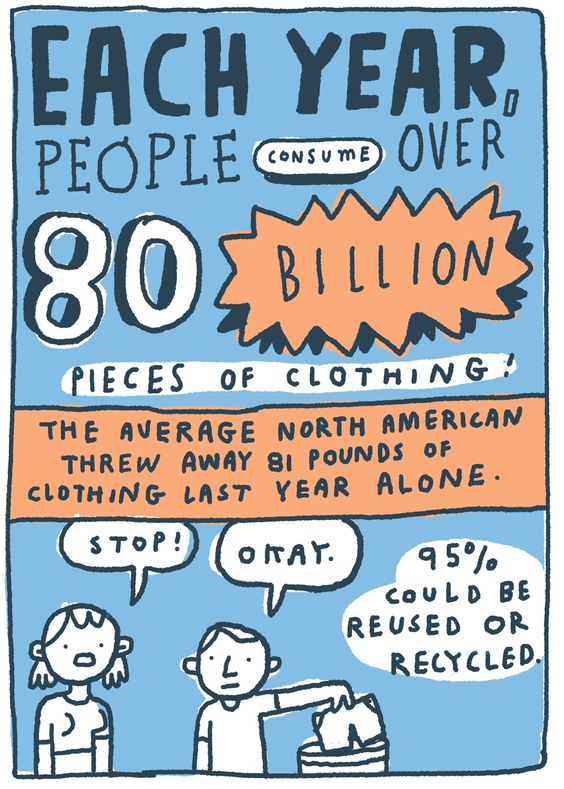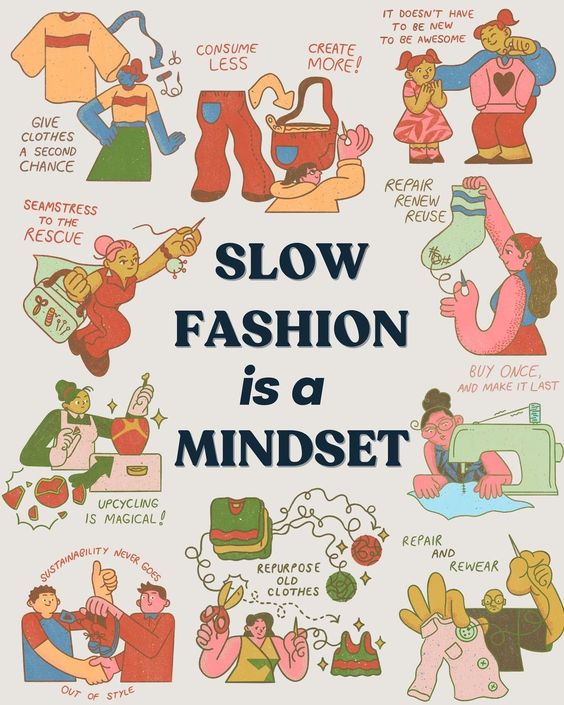Charity shops and other second-hand stores are witnessing an influx of young customers shopping in their stores. Has this sudden interest caused a rise in prices, and made the experience of second-hand shopping more difficult for those who visit the stores out of necessity?
The demographic of 16 to 24 year olds, once described as “the least likely to be involved in charitable giving or social action” in a study conducted in 2016, have now become the main customers in many second-hand shops.
This is because “Gen Z and charity shops seem to be a match made in heaven”, combining their love of retail therapy, sustainability and cheap prices into one shopping experience.



Image Information and Credit
Picture 1: Illustration originally created by Mike Lowery. His website is hyperlinked here.
Picture 2: Found on Pinterest account ‘shopzerowaste’. The URL.
Picture 3: To my knowledge and research, the original came from an article posted in 2020. The URL.
In an interview with Abigail Irving-Munro (Fashion Early Career Research Coordinator at Northumbria University), she explained how Global warming and the push to become more environmentally conscious has resulted in a boom in second-hand purchases.

She explained that because “buying first-hand clothing isn’t deemed responsible anymore, consumers are now turning to new ways of purchasing items, so they’re going towards second-hand clothing.”
She then went on to describe how this move towards sustainable shopping is “also quite an affordable bracket for some younger consumers, and therefore more appealing.”

Image Information and Credit
Both photos were taken by Emma Benton. I took them at the Tynemouth market as my friend and I visited the stalls.
For example, research conducted by The Charity Retail Association (the national body representing charity retailers in the UK) found that the average transaction in a charity shop was £7.02, and the median prices for womenswear was £4.50, and menswear £5.01.
Through speaking to Ayomide Kehinde, an International Undergraduate Student studying Computer Science at Newcastle University, I found that these low prices were highly influential in young people’s decision to turn to second-hand shopping.
Ayomide stated that she visits charity shops because “of the sustainability and environmental impact, my ethical considerations with the fashion industry, and because it’s a less expensive way of shopping.”
However, she also noted that “there has been a gradual hike in prices over the last few months that I have noticed in certain shops […] the general idea of second-hand shopping is affordability, but recent prices of items are getting closer and closer to the retail price.”

According to various studies, this is because many charity shops are “experiencing rising costs and a decline in the quantity of donations” because people are still facing the affects of the Cost- of-Living crisis. People are “reducing their spending on new items” and are “making economic decisions to try selling their belongings through apps like Vinted before considering charitable donations”.
Abigail Irving-Munroe stated that the increases in prices are also due to the fact that “things are starting to trend as second-hand […] we are gentrifying the charity shop essentially, and that’s why we can’t find the unique items anymore.”
Image details and credit
The illustration was originally created by Antonieta Corvalan. Her Instagram account is hyperlinked here. I found the illustration through a post made by ‘Fashion Revolution’ on Instagram. Their account is hyperlinked here.
This reduction in donations and increase in prices has made the process of second-hand shopping and thrifting all the more difficult for customers, and could quite possibly have disastrous consequences on the future of the retail experience.
